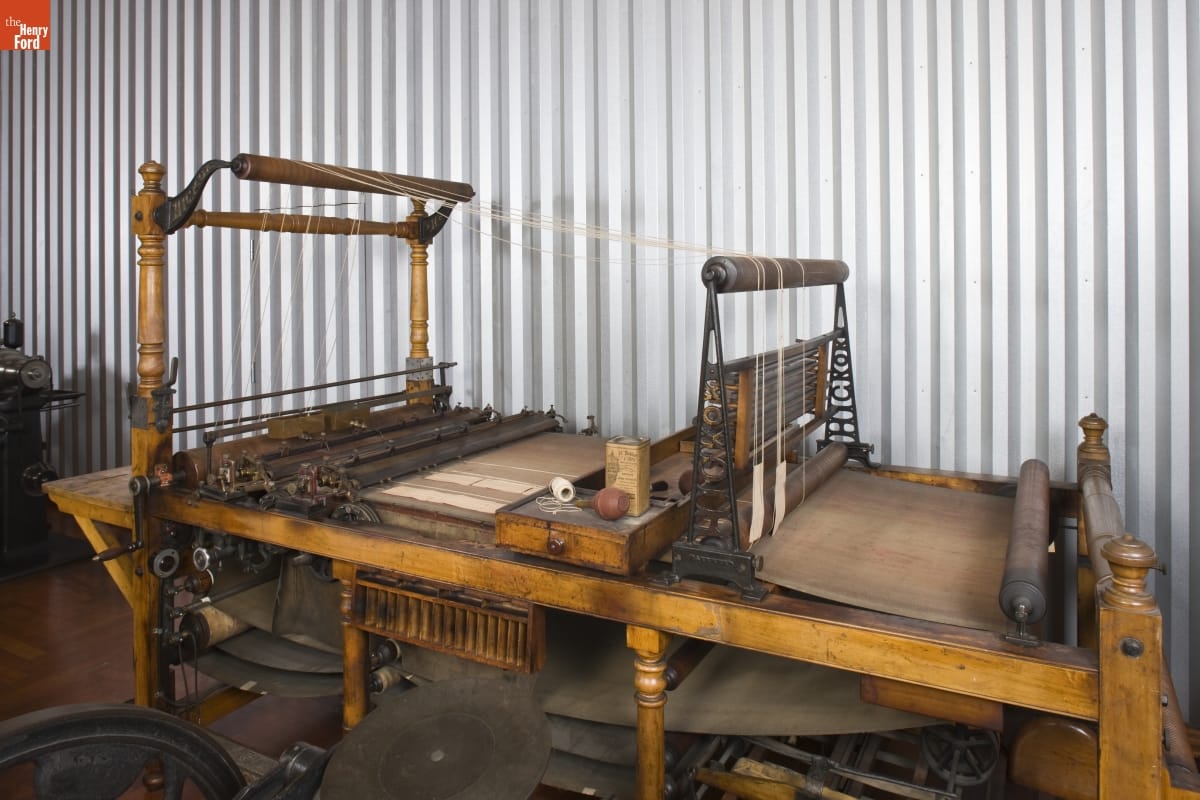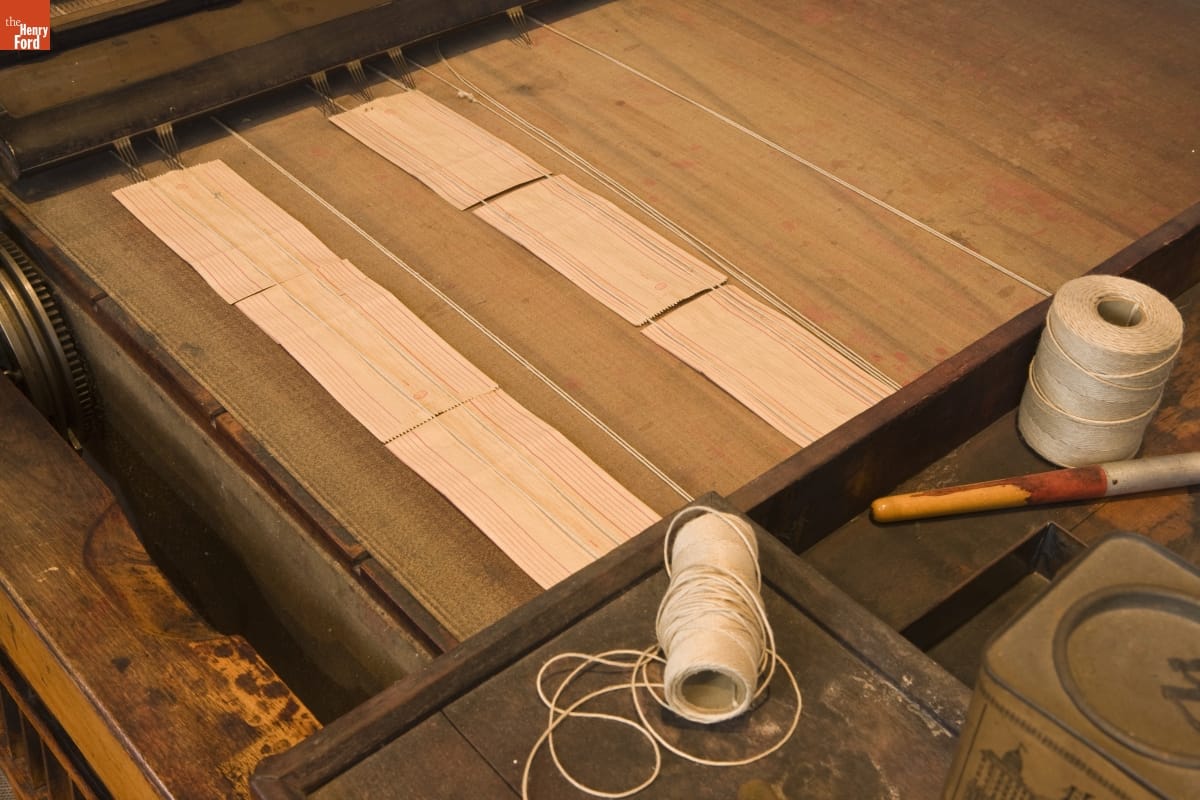Positioning and Synchronicity on Paper
July 17, 2017
Archive Insight,
Think THF

THF91558 (Photographed by John Sobczak)
In the early 19th century, lined paper was generally used only in business ledgers and account books. And the ruling was done by hand using cylindrical rulers and dip pens. Imagine the tedious hours that went into ruling just one book, with multiple colored lines as well as many stop lines, cross lines and sets of double as well as single lines.

In the 1840s, William Orville Hickok got to work on improving this by-hand paper-ruling process, inventing a machine that had a moving belt running beneath a set of pen nibs held in place by a crossbar. Cotton threads, dipped into a trough of ink containers, kept the overhead pens moist. Ink was applied from the mounted pens to the paper fed through the machine — an exercise in perfect positioning and synchronicity.
Learn more about William Orville Hickok and his contributions to the paper-ruling business, and see the 1913 Hickok Paper Ruling Machine for yourself in Made in America at Henry Ford Museum of American Innovation. The Hickok paper-ruling machine was donated by Carl H. Dubac of Saginaw, Michigan, in 1986. Dubac’s father, who bound books by hand for more than 60 years, used the machine to line paper for ledger books.
Additional Readings:
- Made in America: Manufacturing- Thomas Blanchard’s Wood Copying Lathe
- Women in Industry and at Home in WWI
- The Wool Carding Machine
making, manufacturing, communication, Henry Ford Museum, Made in America


Facebook Comments